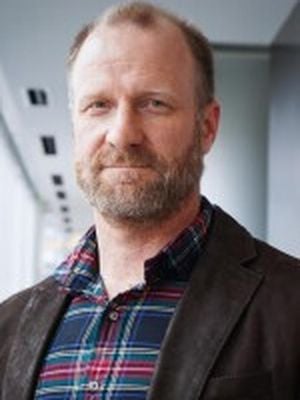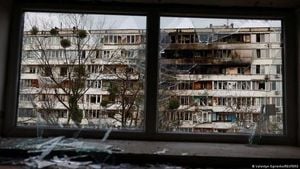The city of Dearborn Heights, Michigan, has found itself at the center of a heated national debate after its police department unveiled an optional uniform patch featuring both English and Arabic text. The announcement, made in a now-deleted Facebook post on September 3, 2025, was intended to celebrate the city’s diversity and honor its significant Arab-American population. Instead, it ignited a firestorm of online backlash, political commentary, and soul-searching about what it means to represent a multicultural America.
According to Fox News, the Dearborn Heights Police Department initially shared the news with pride: “This patch was created by Officer Emily Murdoch, who designed it to reflect and honor the diversity of our community — especially the many residents of Arabic descent who call Dearborn Heights home. By incorporating Arabic script alongside English, this patch represents unity, respect, and our shared commitment to service. We are proud of Officer Murdoch’s creativity and dedication in helping our department better represent the people we serve.” The patch, which reads “Dearborn Heights Police” in both languages, was described as an optional addition to the uniform, not a mandatory change.
But the internet, as it often does, had other ideas. Almost immediately after the announcement, critics took to social media to voice their disapproval. Commentators and lawmakers, including activist Brigitte Gabriel and Florida Republican Rep. Randy Fine, issued scathing rebukes. Gabriel, writing on X (formerly Twitter), declared, “This is how it starts. Dearborn Heights Police Dept. now has the nation’s first-ever uniform patch in Arabic. The civilization takeover has begun.” Rep. Fine added, “They said their goal was to bring sharia law to America. You should’ve believed them. Pray for Michigan.” These posts, cited by Newsweek, quickly gained traction, reflecting a broader anxiety among some Americans about the shifting cultural landscape.
The backlash became so intense that, as reported by WJBK, the Dearborn Heights Police Department disabled comments on its Facebook post and eventually deleted it altogether. The agency’s attempt to foster unity and respect instead became a lightning rod for controversy, with critics questioning not only the patch’s symbolism but the very idea of multicultural representation in public institutions.
Much of the criticism was rooted in demographic and historical arguments. Dearborn Heights, as noted by WJBK, has a Middle Eastern or North African population of 39 percent as of 2023, while neighboring Dearborn boasts an even higher figure at 55 percent. Metro Detroit is home to one of the largest Arab-American communities in the United States, a fact that has shaped the city’s culture, politics, and public life for decades. Yet, some detractors pointed out that the city’s name honors General Henry Dearborn, a figure from America’s early English-speaking past, and argued that Arabic script on police uniforms was out of step with the region’s heritage.
“This country, its origins, and Michigan’s state history — it goes without saying — has absolutely nothing to do with Arabic populations, the Middle East, or Islam,” one commentator opined, as cited in the WJBK report. The same article questioned whether the patch, though optional now, might one day become mandatory, and argued that such changes signal “Dearborn’s embrace of multiculturalism, which will surely fail to bring about whatever vision of peace and tolerance naive liberals there hope it will.” The author went further, suggesting that “diversity is not our strength. It’s just a way to invite a wolf into the hen house.”
In the face of such criticism, city officials moved quickly to clarify their position. Dearborn Heights Mayor Bill Bazzi, in a statement reported by Newsweek, emphasized that the patch was still just an idea and not an official part of the department’s uniform. “At this time, this patch addition remains an idea and should NOT have been presented as an official prototype,” Bazzi stated. He went on to express pride in the police department’s broader community outreach efforts, including the Dearborn Heights Youth Explorers Program and the largest DHPD Night Out event, both designed to foster engagement across the city’s diverse population.
Officer Emily Murdoch, the designer behind the patch, has not issued a public statement since the controversy erupted. The department, meanwhile, has remained largely silent, perhaps hoping to let the storm pass. But the questions raised by the incident are unlikely to fade quickly. For supporters of the patch, the move was a well-intentioned gesture of inclusion, a way to signal to Arab-American residents that they are seen, respected, and valued by their local government. For critics, it was a harbinger of unwanted cultural change, a sign that cherished traditions and identities are being eroded in the name of diversity.
The debate in Dearborn Heights echoes broader national conversations about multiculturalism, identity, and the role of public institutions in a changing America. Cities like Dearborn Heights, with their rapidly shifting demographics, often become flashpoints for these debates. According to the U.S. Census Bureau, the Arab-American population in Michigan has grown steadily over the past several decades, driven by waves of immigration and the natural growth of established communities. This has brought new languages, religions, and cultural practices into the public sphere, challenging old assumptions and forcing communities to renegotiate what it means to belong.
Yet, as history shows, America’s story has always been one of adaptation and change. From the German-speaking enclaves of Pennsylvania to the Spanish missions of California, the nation’s patchwork of languages and cultures has often found expression in public life — sometimes peacefully, sometimes not. The controversy over the Dearborn Heights patch is just the latest chapter in this ongoing story.
For now, the fate of the Arabic-English police patch remains uncertain. Mayor Bazzi’s statement suggests that any official adoption will require further discussion and, presumably, broader community input. In the meantime, the episode has laid bare the deep divisions — and the passionate convictions — that continue to shape American debates over diversity, identity, and the meaning of public service.
As Dearborn Heights looks ahead, its residents and leaders will have to decide: Is the path to unity paved with symbols of inclusion, or with a reaffirmation of tradition? The answer, as always, will depend on who gets to tell the story — and who is willing to listen.



